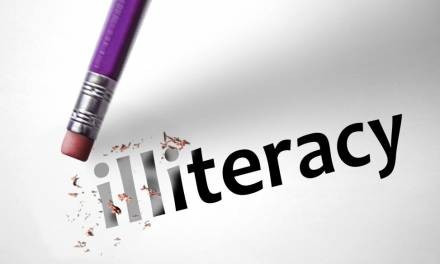Illiteracy in India
By School Admin
India is a land of diverse cultures, religions and communities. It is the second most populous country, the seventh largest country by land area, and the most populous democracy in the world. Every region has its own customs and tradition. With all of this majestic pride, the Indian subcontinent is a unique nation of its kind. With all of these aspects, India is still primarily considered a developing country in the global south. One of the main issues India currently faces is the problem of “Illiteracy”. Although this may seem absurd at first, the truth remains the same. As per the UNESCO report of 2017-18, 35% of the world’s illiterate population resides in India. *Causes of Illiteracy* Illiteracy in India is because of a complex web of social and economic divide in the country. Economic disparities, gender discrimination, caste discrimination, and technological barriers lead to illiteracy in India. India has the largest population of illiterate adults, which further contribute to this vicious cycle of Illiteracy in India. Literacy rate in India Literacy rate in India stands at 74% as per Census 2011. There is a stark difference between male and female literacy rates, which stand 82% and 65% respectively. There is a wider gap in literacy rates of different castes. The literacy rate of Scheduled Tribes stands at 58.96%, while the Scheduled Castes is at 66.10%. Bihar has the lowest literacy rate in India, at 61.80%, while India’s literacy rate is 74.04%. Female literacy rate in Bihar stands at 51.5%, while the male literacy rate is much higher, at 71.2%. Whereas Kerala has the highest literacy rate in India, at 94%, with male literacy rate at 96.1% and female literacy rate at 92.1%. How can we end Illiteracy Illiteracy creates several hurdles in the development of a country and affects every person in that country. Here are five ways by which we can end illiteracy in India: 1. Inclusive Education The RTE Act (2009) has resulted in increased enrolment of children in schools, but the Act is applicable for children between 6-14 years of age. Children, especially girl children, who drop out of school after 14 years of age, find it almost impossible to continue their education. The purview of the Act must be increased to make education accessible to every individual. 2. Increased investment in government schools Due to lack of funds, the government schools are unable to invest in providing basic facilities to children. Lack of functioning toilets, hand-washing area, and drinking water compels children, especially girl children to drop out of school. On the other hand, private schools with high-end facilities charge exorbitant fee making it impossible for those from the marginalised communities to access services. Increasing government expenditure in public schools will make them more accessible. 3. Vocational training Often school education alone does not provide the skills required to enter the workforce. The current system of rote learning without practical training affects the quality of education and fails to develop employable skill sets. Thus, vocational training is important to fill this gap. 4. Teacher training The education system cannot be enhanced without trained and educated teachers. Lack of qualified teachers in both public and private schools impact learning outcomes of children. There is a need for drastic changes to ensure that schools hire qualified teachers, availability of qualified teachers, and opportunities for individuals to be trained as teachers. 5. Changing social norms Social norms play a huge role in determining the growth of a country. Regressive social norms result in girls dropping out schools or children not being sent to school at all, and this creates a vicious cycle of illiteracy and patriarchal norms for even future generations. Conclusion The value of education cannot be underestimated. Many people like to think of it merely as the process to gain the skills and expertise necessary for the job market. Even though education gives an a individual a competitive advantage in the job market, that is not all that it does. Going to school plays a major role in the mental as well as social development of a person. The lessons learned and the experiences that a person go through while in school prepare him or her for life in society. One can learn the problem solving skills and develop the social intelligence necessary to overcome everyday life challenges. Illiteracy, therefore has no room in modern society. The more the number of people who have gone to school, the better the community. Everyone should aspire to be educated and gain knowledge because of the important benefits of being literate
